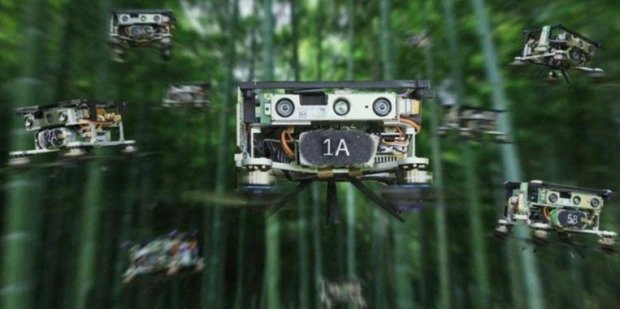China has revealed horrifying AI satellite swarms in the deadly space race that track down and eliminate hostile targets.
China has revealed scary AI satellite swarms that hunt out and kill adversary targets in yet another terrifying development in the space race.
Chinese researchers said they could now send a big motherboard into orbit with deadly accuracy and speed, launching hundreds of little satellites known as “cubesats.”
These small satellites, which weigh just 2.2 pounds, are so intricate that they can only be operated by artificial intelligence (AI).
The story claims that many months later, Chinese and American satellites engaged in a game of “geostationary orbit cat and mouse”.
The cubesats might be used to patrol and defend against attack by rogue forces in space using advanced AI algorithms that guide the drones when and how to attack, according to Zhang Jin, who spearheaded research into the deadly swarms.
The “multi-round greedy search” approach, as it is known by researchers, may direct up to four motherboards to attack nine hostile targets in less than a day.
 When put to the test, the program was able to direct “cubesats” to destroy adversary targets in four minutes—227 times quicker than a standard approach, which required more than three hours.
When put to the test, the program was able to direct “cubesats” to destroy adversary targets in four minutes—227 times quicker than a standard approach, which required more than three hours.
According to academics, the intricacy of a significant space combat would be so great that it would be beyond the capabilities of both the human brain and even some really strong algorithms, as reported by the South China Morning Post.
Unlocking the proper AI to operate the motherboard and cubesats would have “great economic and military worth,” according to the study, which was published in the peer-reviewed journal Chinese Space Science and Technology.
China claims Elon Musk’s SpaceX satellites twice last year got “dangerously close” to their new space station, threatening to shoot them down.
The swarms can engage in combat for a longer period of time because it is also incredibly effective and can calculate paths that use the least amount of fuel and energy.
Professor Zhang stated, “In the future, we will incorporate randomization into the search strategy to get over the greedy algorithm’s constraints and achieve global optimal outcomes.
Beijing recently asserted that it had created an anti-satellite AI system that had mastered deception.
In a lethal system trial, three tiny satellites were used to approach and capture a valuable target, and the practice was repeated thousands of times, according to the Morning Post.
In a terrifying first, China has also launched a mothership AI drone capable of conducting operations and maybe launching military attacks on its own.
The Chinese claim the ship is intended for maritime research, but there are already concerns that it could be used to launch assaults against the US Navy and other enemies.
According to reports, the Zhu Hai Yun can travel at high speeds of 20 mph and can hold up to 50 aerial, surface, and submerged drones.
Experts have cautioned that drone warfare may someday resemble something from Star Wars.
Beijing has made significant investments in drone warfare over the past ten years as part of its effort to attain military parity with the US by 2049.
Brendan Mulvaney, an ex-marine, said to The Sun: “The breadth and scale of drones will significantly change if we have to wait 10 or more years before we witness a significant conflict.
“Smaller drones may be militarized to the point where they act as an independent long-range weapon, even though larger and more lethal explosives may be launched from drones.
“We frequently consider drones for use in aviation, but there is a complete family of autonomous vehicles that add more capability, increasing the difficulty for the enemies.”
Expert on drones Seth Frantzman said: “Drones won’t just ram into a ship carrying passengers.
“We might witness an attack by aerial drones on underwater machinery that resembles something from Star Wars.
Sources: American Military News, The U.S. Sun,
Rephrased by InfoArmed

